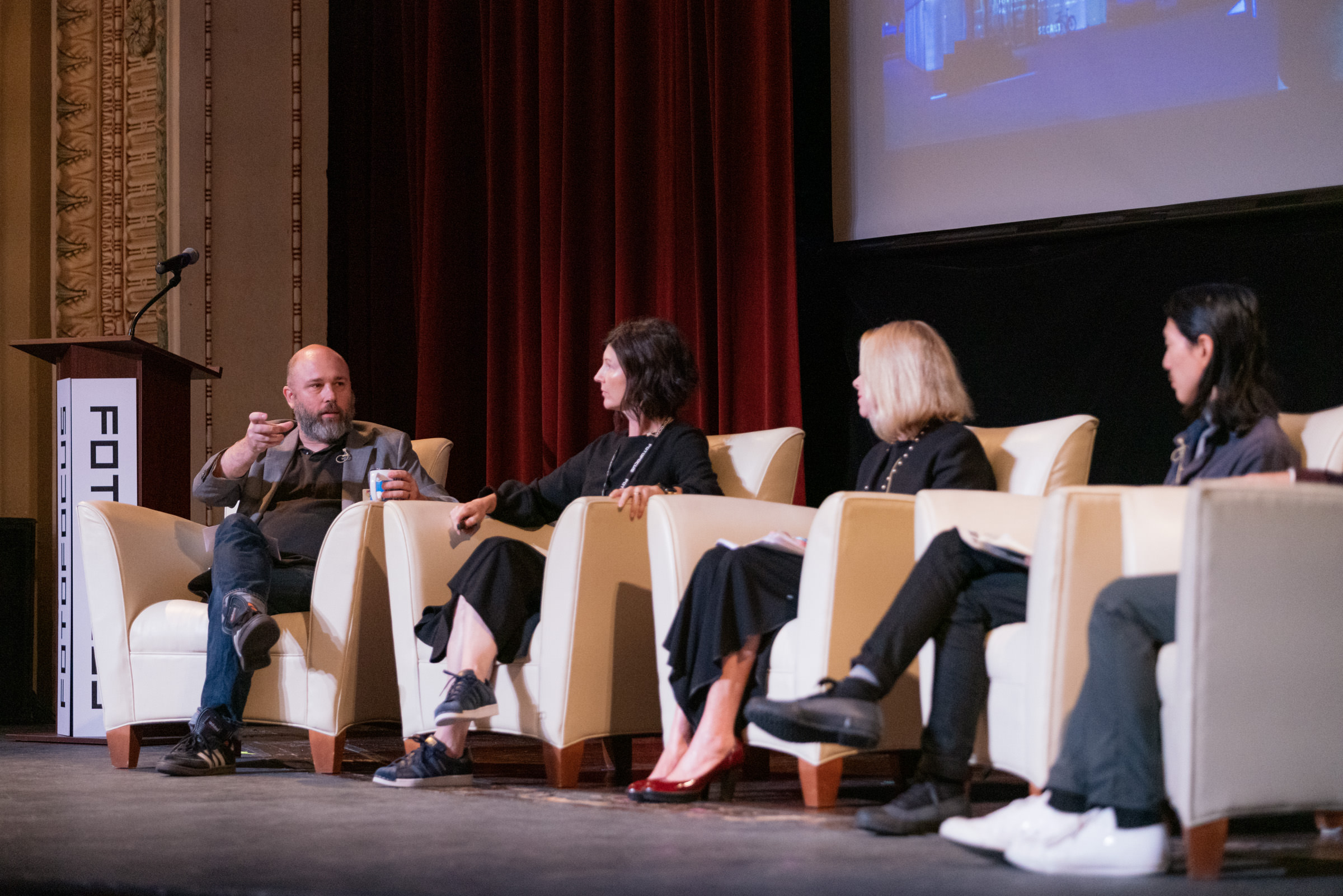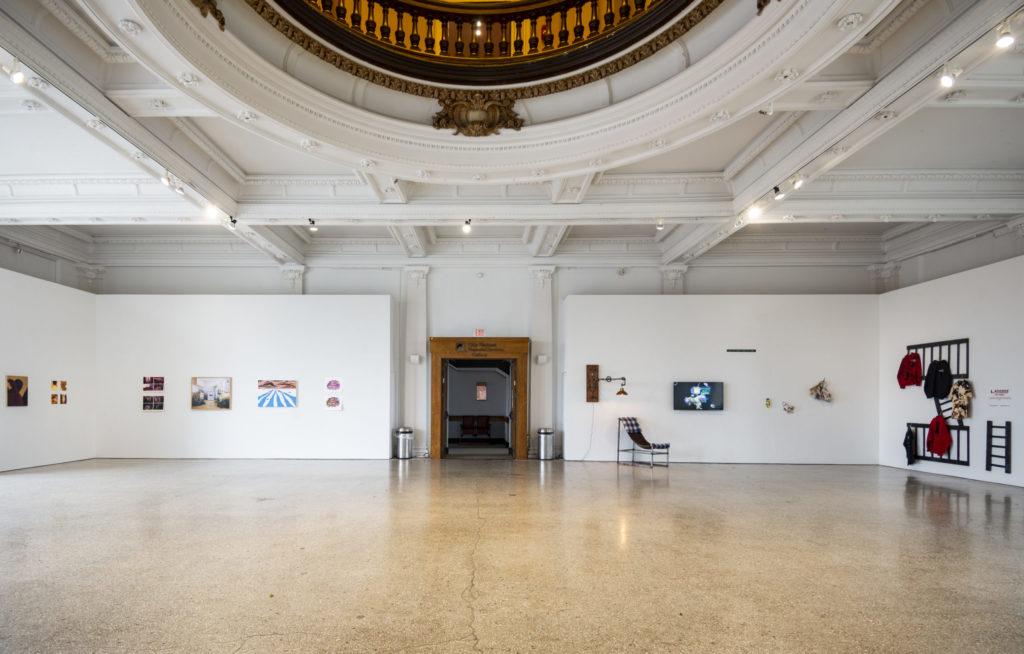The Carnegie Network
Posted on December 3, 2020
This Covington gallery uses its position in the community to foster relationships between artists, students, curators, and the public.
Covington’s The Carnegie is a unique space for so many reasons, not least of which is because of its history: It was built in 1904 as the Covington Public Library, a small part of the grand philanthropic plan of one Andrew Carnegie, once the world’s richest man who over a near-50-year period used his immense fortune to fund more than 1,600 public and university libraries around the country. Upon its opening, Covington Public Library’s founding board opted to designate the library as “open to all citizens” and it was, in fact, one of the first integrated libraries in the southern United States.
An architectural fixture in Covington, the white Beaux-Arts style building is known for its ornate carved wooden staircase and amber-colored stained glass dome. It is now listed on the National Register of Historic Places and continues today as a community arts hub with many faces: a full theater, an education program, and an art gallery.
The leadership at The Carnegie carries the banner of Carnegie’s original “big think” vision: Exhibitions Director Matt Distel, now in his seventh season at the gallery, has a specific approach that has taken the gallery space to a new place, positioning it as a kind of clearinghouse for artists and curators to meet and collaborate. To wit: Distel is focusing his curatorial work on inviting guest curators who can bring new artists into the fold and also connect with existing artist communities. The result is a kind of micro art world social network, informally based in The Carnegie.

We spoke with Distel about how he achieves this goal and how he sees The Carnegie’s gallery weaving into the artistic fabric of the region.
FotoFocus: How would you describe your own role at The Carnegie?
Matt Distel: I oversee the exhibition space. Anything that happens inside the gallery is under my purview. Of late, I’m less interested in being the “curator of record” for all of the exhibitions, which is how the role started for me, and much more interested in coordinating other curators and artists to help them mount their projects. That’s always been a focus of mine as a curator. I take my role to be “How do I best help an artist realize their ideal vision of an exhibition, or installation of a piece of art?” as opposed to putting my point of view out in the world.
FF: Are most curators interested in the latter approach?
MD: There are a lot of different types of curators, and I just kind of fall onto that side of the spectrum, as opposed to The show is my thesis and I’m finding artists to fit my thesis. Which also yields great shows and gives artists great platforms. I just, of late, have been more interested in thinking through whether that’s the best way to help artists, and to help create a space for more and different types of voices.
FF: What is your process for creating shows that hang together thematically?
MD: The idea that I could manage a space that allows for the most flexibility, and allows for multiple ideas to be happening at once, feels more important to me for a space like the Carnegie, in particular, than an overarching curatorial vision. And I think this is an overarching curatorial vision, but it’s not like “We do shows about this kind of work” or “We do shows that focus on this type of artist.”
FF: What are some of the parameters—or even restrictions—that you have for achieving this?
MD: A lot of it has to do with thinking about how we fit into the regional landscape of art spaces and what our role is, where we kind of fall within [that]—what we’re able to do financially, what we’re able to do in terms of flexibility of our space, and a little bit about who our audience is. We tend to think of our space as a more general art audience as opposed to a specific contemporary art audience. I think that has to do with the theater being attached, which is where we get most of the attention locally and regionally. And thinking through ways that we can leverage that audience and the way that they access the visual art that we put up.
FF: Who are you trying to reach with the exhibitions that you mount for The Carnegie?
MD: We kind of have a built-in audience. We’re going to reach them no matter what. I’m interested in the way that I can create a space where that audience can gain something, but also how am I helping artists achieve new opportunities. So I hit on this idea that I needed to invite more guest curators into the space and to introduce them to the artists of the region.
FF: What is your goal for this guest curation setup?
MD: The idea is that I want guest curators who will introduce me to artists that I haven’t worked with yet, [and I’ll] introduce them to artists that they haven’t worked with yet, and create a space for an interaction. So: Here’s this artist that I’ve worked with that I think is making interesting and compelling work. Now I’m introducing them to another curator, and they get to have their relationship. And The Carnegie becomes sort of a hub for these more meaningful interactions.
I’ve also been talking to artists about what they want and need, and one of the most important things is a studio visit or an opportunity to show outside of this area, or in a space that they didn’t have access to before. So with all of these interactions, if intentional about it, you can foster these relationships, or at least set up the situation where an artist or curator might be able to take advantage of a new relationship and offer an artist a new opportunity.
FF: Is this a formal program, or just something that’s built into your programming?
MD: I’ve tried to formalize it at times, and I’ve been more successful being a bit more casual about it. It has its own parameters that you’re pushing up against.
FF: Your building has its own personality, and has multiple uses in the community today. Does that help or hinder with planning your exhibitions?
MD: We have the giant main gallery space that has a huge mixed use. It was the main library room, like with the circulation desk. It’s built as a big, open room. It’s the intermission for the theater; it’s an event space; it’s used for meetings, all kinds of things, in addition to being a gallery space. The idea that something in there is kind of free flowing and flexible is useful to the institution. A lot of people see the work in that space without intending to.
FF: What are some current exhibitions at the gallery?
MD: We have a small exhibition for the Kentucky Governor’s School for the Arts. I think we’re on year nine working with them. These are all high school students. Typically we’ve shown a few artists from their summer program—a curator from The Carnegie would go down and select an artist from that program, and they’d give them a small scholarship and exhibition. This year, instead of doing that, we opened it up. Their summer program was entirely virtual, so none of the artists were able to see the others’ work in person. The goal is to exhibit, to provide real actual exhibition or gallery experience for these young artists.
The main show that’s up right now is Same Again, from the Art Academy of Cincinnati. It was an invitation to all the seniors who graduated last year who didn’t get their thesis shows [due to Covid].
These kinds of partnerships have been really important. They are another concept or idea beyond the guest curators, which is working with other arts organizations in the region to collaborate. We’re building partnerships.
Distel’s collaborative curatorial approach—and indeed The Carnegie’s profile within the Covington community and beyond as a center for arts education and experiences—are part and parcel of the same mission: To open up artistic spaces and relationships to aspiring and working artists, and to share their work with the community at large.
FotoFocus collaborates—locally, nationally, and internationally—to present and support photography and lens-based projects that are accessible, enriching, and engaging to a diverse public. FotoFocus inspires conversations about the world through the art of photography and film, via its partnerships and signature programming including the FotoFocus Biennial, FotoFocus Symposium, FotoFocus Film Program, and FotoFocus Lecture and Visiting Artist Series.
